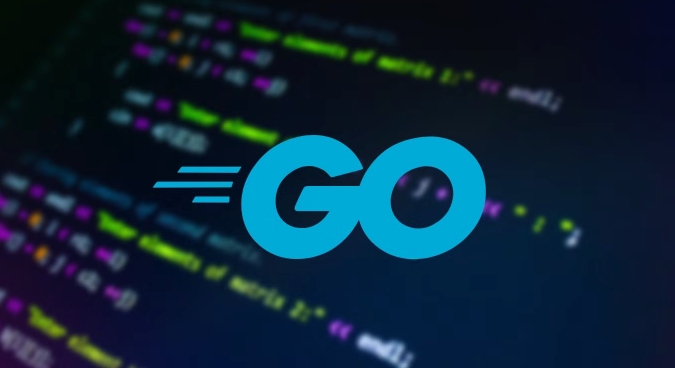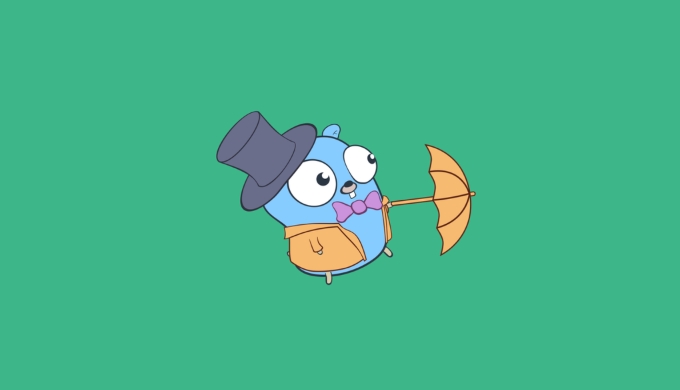Use the go test built-in command to generate coverage data: run go test -cover ./... to display the coverage percentage of each package, or use go test -coverprofile=coverage.out ./... to generate a detailed report and view the specific uncovered lines of code through go tool cover -html=coverage.out -o coverage.html. Integrate coverage report in CI: Create a coverage.out file and upload it through third-party tools such as codecov or coveralls, for example, upload it using the curl --data-binary @coverage.out https://codecov.io command. Multiple packages merge statistical coverage: generate .out files for each package separately, use go tool cover -mode=count -var=ModeSet -o merged.out to merge the results, and finally generate a unified report through go tool cover -html=merged.out -o combined_coverage.html.

When running unit testing for Go language, if you want to know code coverage, the official toolchain has provided a very convenient way. In the version of Go 1.20, the method of obtaining test coverage is more unified and simple. Let me tell you some practical methods.

Use go test built-in command to generate coverage data
Go's own go test command supports direct output of coverage information. You just need to add the -cover parameter when running the test.

go test -cover ./...
This displays the percentage coverage for each package. If you want to see more details about which functions or statements are not covered, you can generate an HTML report:
go test -coverprofile=coverage.out ./... go tool cover -html=coverage.out -o coverage.html
Then open coverage.html with your browser and you can see which line is covered and which line has not been covered.

Tip: If you only care about the coverage of a certain package, you can directly locate it in that directory and execute the command.
Integrate coverage report in CI
Many continuous integration systems (such as GitHub Actions, GitLab CI) support uploading coverage reports. You can first generate the coverage.out file as above, and then upload it using third-party tools such as codecov or coveralls .
The basic process is as follows:
- Install the corresponding service CLI tool
- Generate coverage file
- Upload report
Take codecov as an example:
go test -coverprofile=coverage.out ./... curl --data-binary @coverage.out https://codecov.io
The specific commands of different platforms are slightly different, but the overall idea is the same: Generate report -> Extract data -> Upload analysis .
Multiple packages merge statistical coverage
If you have multiple subpackages and want to aggregate their coverage into a total report, you need to go through step by step:
- First generate
.outfiles for each package - Then use
-coverprofileand-cover.modeto merge all results - Finally, use
go tool coverto output HTML
For example:
go test -cover -coverprofile=coverage1.out ./pkg1 go test -cover -coverprofile=coverage2.out ./pkg2 go tool cover -mode=count -var=ModeSet -o merged.out coverage1.out coverage2.out go tool cover -html=merged.out -o combined_coverage.html
This allows you to obtain a unified coverage report covering multiple modules.
Basically these methods. Although the operation steps seem a bit too many, just by familiarizing yourself with the commands, it will actually run very quickly every time, and it can help you better evaluate the quality of the test.
The above is the detailed content of How to get code coverage for golang tests. For more information, please follow other related articles on the PHP Chinese website!

Hot AI Tools

Undress AI Tool
Undress images for free

Undresser.AI Undress
AI-powered app for creating realistic nude photos

AI Clothes Remover
Online AI tool for removing clothes from photos.

Clothoff.io
AI clothes remover

Video Face Swap
Swap faces in any video effortlessly with our completely free AI face swap tool!

Hot Article

Hot Tools

Notepad++7.3.1
Easy-to-use and free code editor

SublimeText3 Chinese version
Chinese version, very easy to use

Zend Studio 13.0.1
Powerful PHP integrated development environment

Dreamweaver CS6
Visual web development tools

SublimeText3 Mac version
God-level code editing software (SublimeText3)

Hot Topics
 What are the implications of Go's static linking by default?
Jun 19, 2025 am 01:08 AM
What are the implications of Go's static linking by default?
Jun 19, 2025 am 01:08 AM
Go compiles the program into a standalone binary by default, the main reason is static linking. 1. Simpler deployment: no additional installation of dependency libraries, can be run directly across Linux distributions; 2. Larger binary size: Including all dependencies causes file size to increase, but can be optimized through building flags or compression tools; 3. Higher predictability and security: avoid risks brought about by changes in external library versions and enhance stability; 4. Limited operation flexibility: cannot hot update of shared libraries, and recompile and deployment are required to fix dependency vulnerabilities. These features make Go suitable for CLI tools, microservices and other scenarios, but trade-offs are needed in environments where storage is restricted or relies on centralized management.
 How does Go ensure memory safety without manual memory management like in C?
Jun 19, 2025 am 01:11 AM
How does Go ensure memory safety without manual memory management like in C?
Jun 19, 2025 am 01:11 AM
Goensuresmemorysafetywithoutmanualmanagementthroughautomaticgarbagecollection,nopointerarithmetic,safeconcurrency,andruntimechecks.First,Go’sgarbagecollectorautomaticallyreclaimsunusedmemory,preventingleaksanddanglingpointers.Second,itdisallowspointe
 How do I create a buffered channel in Go? (e.g., make(chan int, 10))
Jun 20, 2025 am 01:07 AM
How do I create a buffered channel in Go? (e.g., make(chan int, 10))
Jun 20, 2025 am 01:07 AM
To create a buffer channel in Go, just specify the capacity parameters in the make function. The buffer channel allows the sending operation to temporarily store data when there is no receiver, as long as the specified capacity is not exceeded. For example, ch:=make(chanint,10) creates a buffer channel that can store up to 10 integer values; unlike unbuffered channels, data will not be blocked immediately when sending, but the data will be temporarily stored in the buffer until it is taken away by the receiver; when using it, please note: 1. The capacity setting should be reasonable to avoid memory waste or frequent blocking; 2. The buffer needs to prevent memory problems from being accumulated indefinitely in the buffer; 3. The signal can be passed by the chanstruct{} type to save resources; common scenarios include controlling the number of concurrency, producer-consumer models and differentiation
 How can you use Go for system programming tasks?
Jun 19, 2025 am 01:10 AM
How can you use Go for system programming tasks?
Jun 19, 2025 am 01:10 AM
Go is ideal for system programming because it combines the performance of compiled languages ??such as C with the ease of use and security of modern languages. 1. In terms of file and directory operations, Go's os package supports creation, deletion, renaming and checking whether files and directories exist. Use os.ReadFile to read the entire file in one line of code, which is suitable for writing backup scripts or log processing tools; 2. In terms of process management, the exec.Command function of the os/exec package can execute external commands, capture output, set environment variables, redirect input and output flows, and control process life cycles, which are suitable for automation tools and deployment scripts; 3. In terms of network and concurrency, the net package supports TCP/UDP programming, DNS query and original sets.
 How do I call a method on a struct instance in Go?
Jun 24, 2025 pm 03:17 PM
How do I call a method on a struct instance in Go?
Jun 24, 2025 pm 03:17 PM
In Go language, calling a structure method requires first defining the structure and the method that binds the receiver, and accessing it using a point number. After defining the structure Rectangle, the method can be declared through the value receiver or the pointer receiver; 1. Use the value receiver such as func(rRectangle)Area()int and directly call it through rect.Area(); 2. If you need to modify the structure, use the pointer receiver such as func(r*Rectangle)SetWidth(...), and Go will automatically handle the conversion of pointers and values; 3. When embedding the structure, the method of embedded structure will be improved, and it can be called directly through the outer structure; 4. Go does not need to force use getter/setter,
 What are interfaces in Go, and how do I define them?
Jun 22, 2025 pm 03:41 PM
What are interfaces in Go, and how do I define them?
Jun 22, 2025 pm 03:41 PM
In Go, an interface is a type that defines behavior without specifying implementation. An interface consists of method signatures, and any type that implements these methods automatically satisfy the interface. For example, if you define a Speaker interface that contains the Speak() method, all types that implement the method can be considered Speaker. Interfaces are suitable for writing common functions, abstract implementation details, and using mock objects in testing. Defining an interface uses the interface keyword and lists method signatures, without explicitly declaring the type to implement the interface. Common use cases include logs, formatting, abstractions of different databases or services, and notification systems. For example, both Dog and Robot types can implement Speak methods and pass them to the same Anno
 How do I use string functions from the strings package in Go? (e.g., len(), strings.Contains(), strings.Index(), strings.ReplaceAll())
Jun 20, 2025 am 01:06 AM
How do I use string functions from the strings package in Go? (e.g., len(), strings.Contains(), strings.Index(), strings.ReplaceAll())
Jun 20, 2025 am 01:06 AM
In Go language, string operations are mainly implemented through strings package and built-in functions. 1.strings.Contains() is used to determine whether a string contains a substring and returns a Boolean value; 2.strings.Index() can find the location where the substring appears for the first time, and if it does not exist, it returns -1; 3.strings.ReplaceAll() can replace all matching substrings, and can also control the number of replacements through strings.Replace(); 4.len() function is used to obtain the length of the bytes of the string, but when processing Unicode, you need to pay attention to the difference between characters and bytes. These functions are often used in scenarios such as data filtering, text parsing, and string processing.
 How do I use the io package to work with input and output streams in Go?
Jun 20, 2025 am 11:25 AM
How do I use the io package to work with input and output streams in Go?
Jun 20, 2025 am 11:25 AM
TheGoiopackageprovidesinterfaceslikeReaderandWritertohandleI/Ooperationsuniformlyacrosssources.1.io.Reader'sReadmethodenablesreadingfromvarioussourcessuchasfilesorHTTPresponses.2.io.Writer'sWritemethodfacilitateswritingtodestinationslikestandardoutpu






